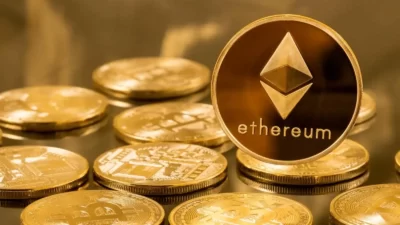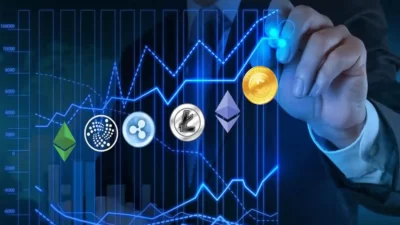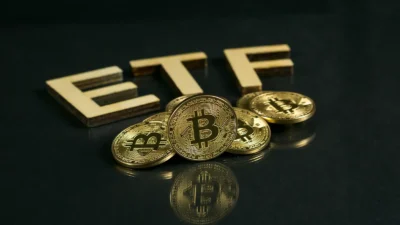Table of Contents
ToggleHave you ever sent some Ethereum to your wallet or someone else and wanted to check that the transaction went through properly? We’ve all been there. Waiting around for blockchain confirmations can be so annoying. But don’t worry; it’s easy to check the status of any Ethereum transaction.
In this short article, here’s how to search for any ETH transaction on Etherscan or your wallet app. You’ll learn to find the transaction hash, check the number of confirmations, see if it was successful, and figure out exactly where your crypto coins are. With these simple tips, you’ll have the power to verify your Ethereum transactions and ease your worries whenever you send ETH around.
Ready to become a master of Ethereum transaction checking? Let’s dive in!
Understanding Ethereum Transactions
To check your Ethereum transactions, you’ll first need to understand how they work. An Ethereum transaction transfers ether between accounts and executes smart contract code. Each transaction contains info like the sender and recipient addresses, amount of ether transferred, gas limit and gas price.
When you send ether or interact with a smart contract, your transaction is broadcast to the network and queued in the transaction pool until a miner picks it up. Miners verify the transaction and include it in a block, which is then added to the blockchain. Once your transaction is included in a block, it’s considered successful, and the recipient receives the funds.
You can view your transactions on the blockchain using an Ethereum explorer like Etherscan. There, you’ll see details for each transaction like the block number, timestamp, gas used and the exact ether amount sent or received. Explorer sites let you search transactions by address, hash, block number or token to find the info you need easily.
Monitoring your transactions is important to ensure funds are moving accurately and to catch any potential errors. By understanding how Ethereum transactions work and using a block explorer, you’ll have transparency when you buy and sell cryptocurrency in Dubai or elsewhere.

Tracking an Ethereum Transaction
Here are the simple steps to check an Ethereum transaction:
Receive Transaction Hash
First, you’ll need to get the transaction hash. When you transact on the Ethereum network, this unique code is given, so check your wallet or exchange history.
Use an Ethereum Blockchain Explorer
Next, go to an Ethereum blockchain explorer like Etherscan. These sites let you know about transactions, blocks, and addresses on the Ethereum blockchain.
Enter the Transaction Hash
Then, paste the transaction hash into the explorer’s search bar. It will pull up all the details about that specific transaction.
Analyze Transaction Details
Finally, check the transaction details. You’ll see things like who sent it, who received it, how much was sent, any fees paid, and the current status so you can confirm if it was completed successfully.
How to Check Ethereum Transactions on Etherscan
If you’ve ever sent or received ETH, you’ll want to verify the transaction went through. The easiest way is to check Etherscan, Ethereum’s block explorer.
Head to Etherscan.io and enter your Ethereum public address in the search bar. This will pull up your wallet and transaction history. Locate the transaction in question and look for its status – it should say “Success” or have a green checkmark. This means your transaction was processed and included in a block on the Ethereum blockchain.
If the status is “Pending,” don’t worry – it just means miners haven’t picked it up yet. Ethereum transactions can take a few minutes to confirm. Check back briefly, and the status should change to “Success.”
You’ll also see details like the transaction hash, time of confirmation, gas fee paid, and the amount of ETH or tokens transferred. The hash is like a receipt number to look up future transactions.
Etherscan is a useful tool for any Ethereum user. Bookmark the page and check it whenever you have questions about your transactions or wallet balance. Staying on top of your funds and transfers is key to using crypto responsibly. Etherscan makes that easy, giving you peace of mind and insight into how the Ethereum network operates.

How to Check Ethereum Transactions on Your Wallet
To view the details of Ethereum transactions on your wallet, follow these steps:
Open your Ethereum wallet and navigate to the “Transactions” page. This will show you a list of all recent transactions associated with your wallet address. Select a transaction to view its details.
The details page will show you the following:
- The amount of Ether (ETH) sent or received in the transaction.
- The wallet address of the sender or recipient.
- The date and time the transaction was initiated and completed.
- The transaction ID or hash is a unique identifier for that transaction.
- The status of the transaction should show as “Success” if completed.
If the status is “Pending,” the transaction has been initiated but not completed. Ethereum transactions typically take 10 to 20 seconds to process but sometimes take longer due to network congestion. As long as your transaction was properly initiated with the correct amount of gas, it should be completed successfully once the network traffic clears.
You may also see additional details like the transaction fee or “gas” amount, the block number the transaction was included in, and any memos or notes attached. All this information provides transparency into the movement of funds in and out of your Ethereum wallet.
Tools to Monitor Ethereum Transactions
There are a few handy tools crypto users employ to monitor Ethereum transactions. These allow you to search for details about any ETH transfer and stay on top of your holdings and transactions.
Etherscan
Etherscan is the most popular block explorer for Ethereum. You can enter any Ethereum address or transaction hash (TXID) to pull up all the transfer details like amount, gas fee, date/time, etc. Etherscan also offers tools to set alerts for specific addresses so you get notified of any transactions related to your holdings.
MyCrypto
Formerly MyEtherWallet, MyCrypto is a free, open-source interface for interacting with the Ethereum blockchain. In addition to sending and receiving ETH, you can use MyCrypto to view your Ethereum address balances and full transaction histories. MyCrypto offers a “TX Status” tool to quickly check if an Ethereum transaction is pending, confirmed, or failed.
MetaMask
MetaMask is a crypto wallet that stores ETH and ERC-20 tokens and interacts with Ethereum dApps. Although primarily a wallet, MetaMask does provide basic transaction details and notifications to help you keep track of your Ethereum transfers and holdings. You can also set custom notifications within MetaMask to get alerts for transactions related to specific addresses or dApps.
Using a combination of these tools, you’ll have a complete overview of all your Ethereum transactions and wallet balances. Staying on top of your ETH transfers and having a record of all transaction hashes (TXIDs) is important for accountability and security as a crypto user. Besides ETH, these explorers and wallets work for any ERC-20 token on the Ethereum blockchain.
Conclusion
Now, you’re armed with the knowledge of how to check the status of your Ethereum transactions. Whether you’re just starting in crypto or a seasoned pro, brushing up on the basics never hurts.
Remember that patience goes a long way when waiting for complete transactions. But if something seems off, don’t hesitate to dig in and investigate further. The blockchain leaves a trail of breadcrumbs if you know where to look. Hopefully, this guide gave you useful pointers for verifying your Ethereum transactions. Knowledge is power in crypto, so stay curious and keep learning!







